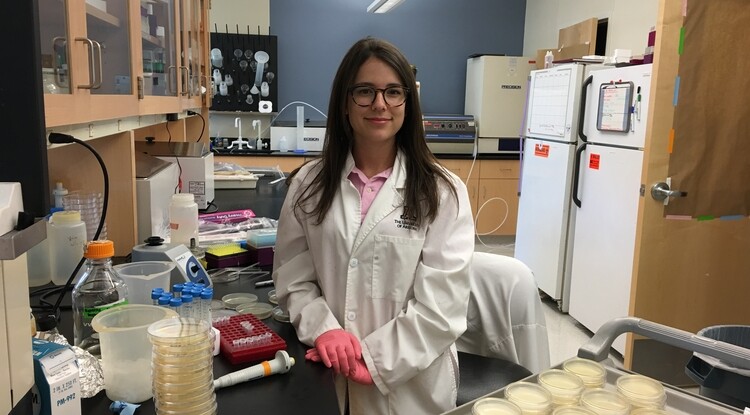One of the dirty secrets of spaceflight is that, in space, there's no such thing as laundry day. That's because no one has figured out an economical way to wash clothes in orbit. To make things a bit less manky, a University of Arizona undergraduate is developing a new system that may one day allow astronauts to clean their clothes and make them last longer while conserving water.
Scientists and engineers have achieved wonders in space, but keeping clean isn't one of them. In the days of the Space Race, astronauts had to put up with living in a tin can for days or weeks on end without a change of clothes or a proper wash beyond moist towelettes. Improvements came with Skylab and the Space Shuttle, but on the International Space Station {ISS}, things are still about as basic as washing up in a railway station lavatory.
This is due partly to the way water acts in space. Instead of falling or flowing, it floats about in globules until it adheres to something by surface tension. But the main reason is cost. At US$10,000 per pound to get to the station, using water for washing makes less budgetary sense than brushing your teeth with Salon Blanc de Blancs Le Mesnil-sur-Oger 2002 at $899 a bottle.
Instead, crews on the International Space Station use ways of economizing on water that are usually adopted by single-hand round-the-world sailors. "Showering" is basically taking a sponge bath using premixed bags of soap and warm water, while washing hair means applications of a special no-rinse shampoo.
As to laundry, there isn't one. It's cheaper for astronauts to bring along enough changes of clothes to get them through the mission, though "enough" often isn't. The crews wear items for months at a time, and throw them away before they get too ripe – or develop language skills. Not surprisingly, the dirty clothes end up being incinerated in the Earth's atmosphere along with the rest of the garbage.

In search of an alternative, Arizona undergraduate research assistant Christina Morrison, with the help of UA professor of microbiology Charles Gerba, is working under a NASA Space Grant to look at an alternative laundry technique that saves water and cuts down on throwing away clothes.
Morrison's idea is to get the clothes cleaner and a lot less smelly by using a combination of silver and hydrogen peroxide. Both have strong antibiotic properties on their own, and together they have a much stronger effect when combined in water. But what Morrison is proposing isn't just scrubbing space fatigues with silver and peroxide, which would have its own logistical problems. What she wants to do is incorporate silver-ion threads into astronaut clothing, similar to those in germ-killing socks.
To test this idea, Morrison and Gerba took swatches of cloth from antimicrobial socks and treated them with low concentrations of hydrogen peroxide. They then exposed them to Staphylococcus aureus, a common bacterium frequently found on human skin, (as well as in the nose and respiratory tract).
They found the treated swatches exhibited a 99.999 percent reduction in bacteria, while the untreated had only a 43.76 percent reduction. Granted, it isn't the same as a good run through a washing machine with detergent and bleach, but it is better than today's nothing.
"The clothes will stay germ-free longer, because of the silver ions, and can be laundered by adding hydrogen peroxide," says Morrison. "Washed just twice, one shirt could stay microbe- and odor-free in the same length of time an astronaut would normally wear and discard three shirts. This saved mass would drastically reduce the amount of clothing needed to launch into space and allow longer missions."
Morrison says that the next step will be to have volunteers wear antimicrobial socks or regular socks and then treat them with peroxide. They will then be tested by a second group, who will smell them – no bets on which group will be the most desirable.
Source: University of Arizona






